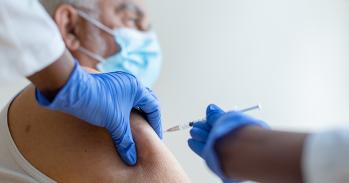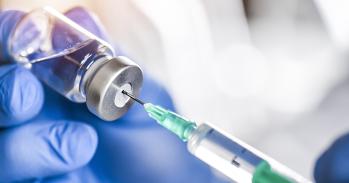
The R number for COVID-19 – the number of people an infected individual passes the virus onto – has risen to above 1 in the North West of England and to 1 in the South West, according to the latest findings published by the Medical Research Council Biostatistics Unit at the University of Cambridge. When R is greater than or equal to 1, it means transmission will be sustained.
The R number for COVID-19 – the number of people an infected individual passes the virus onto – has risen to above 1 in the North West of England and to 1 in the South West, according to the latest findings published by the Medical Research Council Biostatistics Unit at the University of Cambridge. When R is greater than or equal to 1, it means transmission will be sustained.
Real-time tracking of a pandemic, as data accumulate over time, is an essential component of a public health response to a new outbreak. A team of statistical modellers at the Unit are working with Public Health England (PHE) to regularly ‘nowcast’ and forecast COVID-19 infections and deaths. This information feeds directly to SAGE sub-group, Scientific Pandemic Influenza sub-group on Modelling (SPI-M) and to regional PHE teams.
The work uses a transmission model, data on daily COVID-19 confirmed deaths from PHE, and published information on the risk of dying and the time from infection to death, to reconstruct the number of new COVID-19 infections over time, estimate a measure of ongoing transmission, and predict the number of new COVID-19 deaths in different regions and age groups.
In the latest findings, published today, the researchers say:
- There are an estimated 17,000 new infections arising each day across England
- The number of deaths each day is likely to fall to between 100–250 by mid-June
- The R number is below 1 in all regions of England with the exception of the North West and the South West
- In the South West, although R is around 1, the numbers of new infections occurring in the region on a daily basis is relatively low
- There is some evidence that R has risen in all regions, probably due to increasing mobility and mixing between households and in public and workplace settings
- This increase in R will lead to a slowdown in the decrease in new infections and deaths
- The increases in the regional R numbers may result in the decline in the national death rate being arrested by mid-June
For further details, see Nowcasting and Forecasting of COVID-19.

The text in this work is licensed under a Creative Commons Attribution 4.0 International License. Images, including our videos, are Copyright ©University of Cambridge and licensors/contributors as identified. All rights reserved. We make our image and video content available in a number of ways – as here, on our main website under its Terms and conditions, and on a range of channels including social media that permit your use and sharing of our content under their respective Terms.




